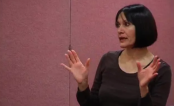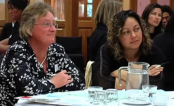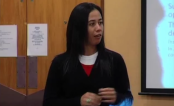Te Aho Arataki Marau mō te Ako i Te Reo Māori - Kura Auraki
Curriculum Guidelines for Teaching and Learning Te Reo Māori in English-medium Schools: Years 1-13
Curriculum guidelines 521 PDF (PDF, 4 MB)
Page navigation:
Te ako i te reo mā te huarahi o te hangarau
Using information and communication technology for teaching and learning te reo Māori
Information and communication technologies (ICT) have long been used in language learning. Today, a search on the Internet reveals a vast array of sites and resources with information about te reo Māori, Māori communities, and tikanga Māori. Two important developments include the launch of I-Papakupu (the Internet version of the monolingual dictionary of te reo Māori) and the reo Māori version of the search engine Google.
Teachers can set up listening posts to enable their students to practise their pronunciation for an authentic purpose, such as a planned presentation. Their students can incorporate audio and video recordings into the portfolios of work that they create to review, monitor and celebrate their achievement over time.
The Internet can link students and teachers of te reo Māori in different schools in New Zealand. Students can create blogs and websites or use email or Skype™ to communicate with others in te reo Māori. Teachers who might otherwise feel isolated professionally can contact one another by email or through discussion boards and share ideas, experiences, lesson plans, and resources. In these ways, both the teacher and the student have opportunities to participate in activities that involve the full range of ara reo – whakarongo (listening), pānui (reading), mātakitaki (viewing), kōrero (speaking), tuhituhi (writing) and whakaatu (presenting). Information about the specific skills that students learn in each of the ara reo is given at each level of these guidelines.
The rapid growth in technologies has meant that teachers need to be aware of how best to use them. Choosing appropriate ways to use ICT in the classroom, and selecting the right resources, requires the same level of teacher judgment as planning to use any other kind of resource.
Digital content is most effective when:
- embedded into an existing programme of learning
- supported by relevant offline experiences (before and after use)
- selected according to the needs and interests of the learner (informed by evidence)
- supported by effective teaching
- combined with other relevant digital content and learning experiences
- learners work collaboratively.
Digistore on TKI (now archived)




